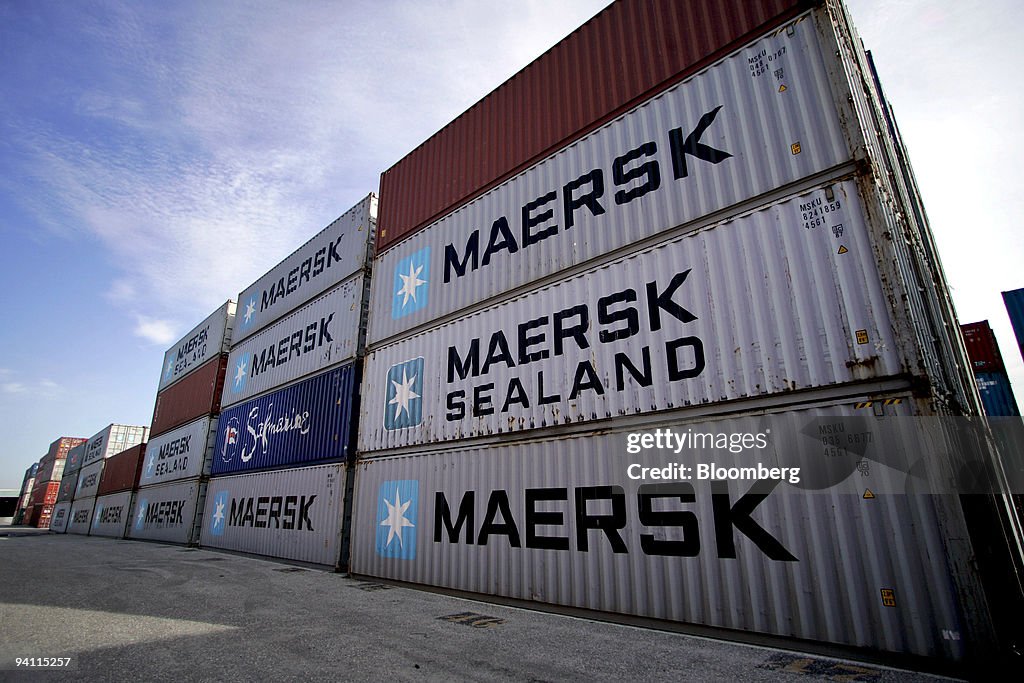U.S. China Trade Deficit
Maersk shipping containers are stacked at the Port of Wilmington in Wilmington, North Carolina, U.S., on Friday, Dec. 4, 2009. A 33 percent-increase in China's manufacturing exports, compared with a 6 percent boost in U.S. exports of factory goods, suggests the trade deficit will rise further, challenging the efforts of policy makers to encourage balanced imports and exports in both nations, the U.S. Manufacturers Alliance said today. Photographer: Jim R. Bounds/Bloomberg via Getty Images

PURCHASE A LICENSE
How can I use this image?
$499.00
USD
DETAILS
Restrictions:
Contact your local office for all commercial or promotional uses.For editorial use only. Additional clearance required for commercial or promotional use, contact your local office for assistance. Any commercial or promotional use of Bloomberg content requires Bloombergs prior written consent.
Credit:
Editorial #:
94115257
Collection:
Bloomberg
Date created:
December 04, 2009
Upload date:
License type:
Release info:
Not released. More information
Source:
Bloomberg
Object name:
US CHINA TRADE DEFICIT